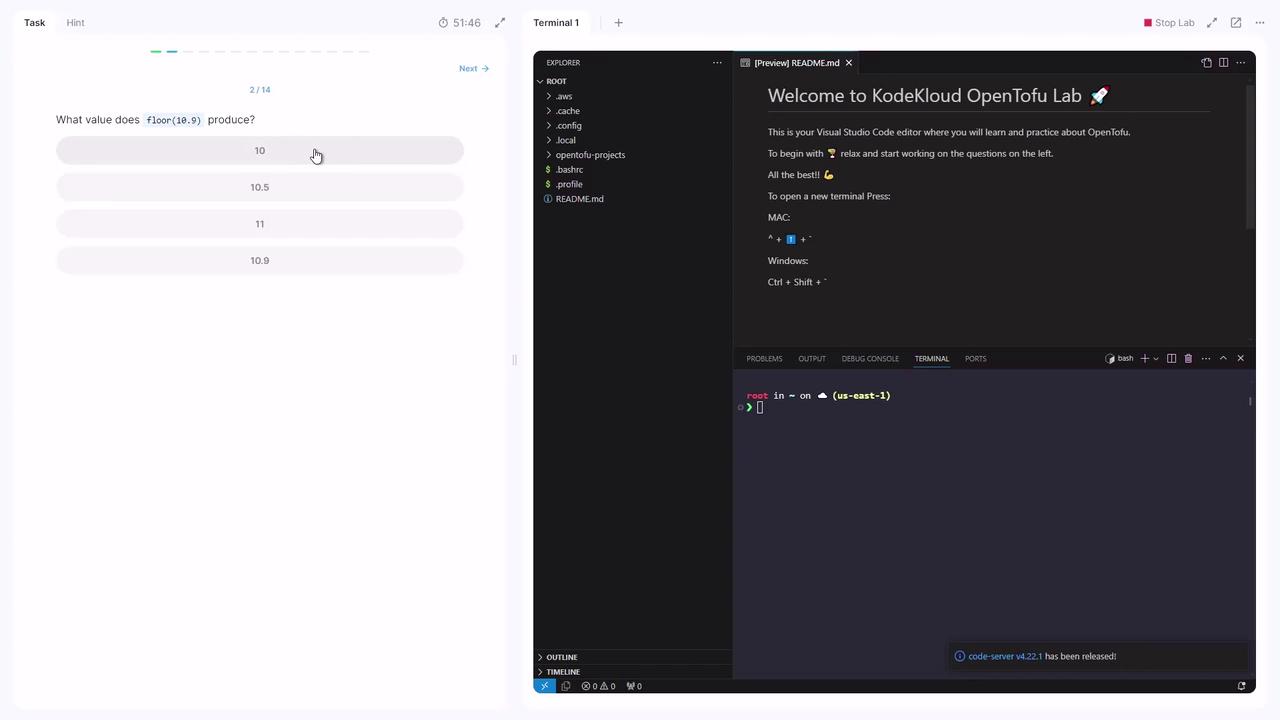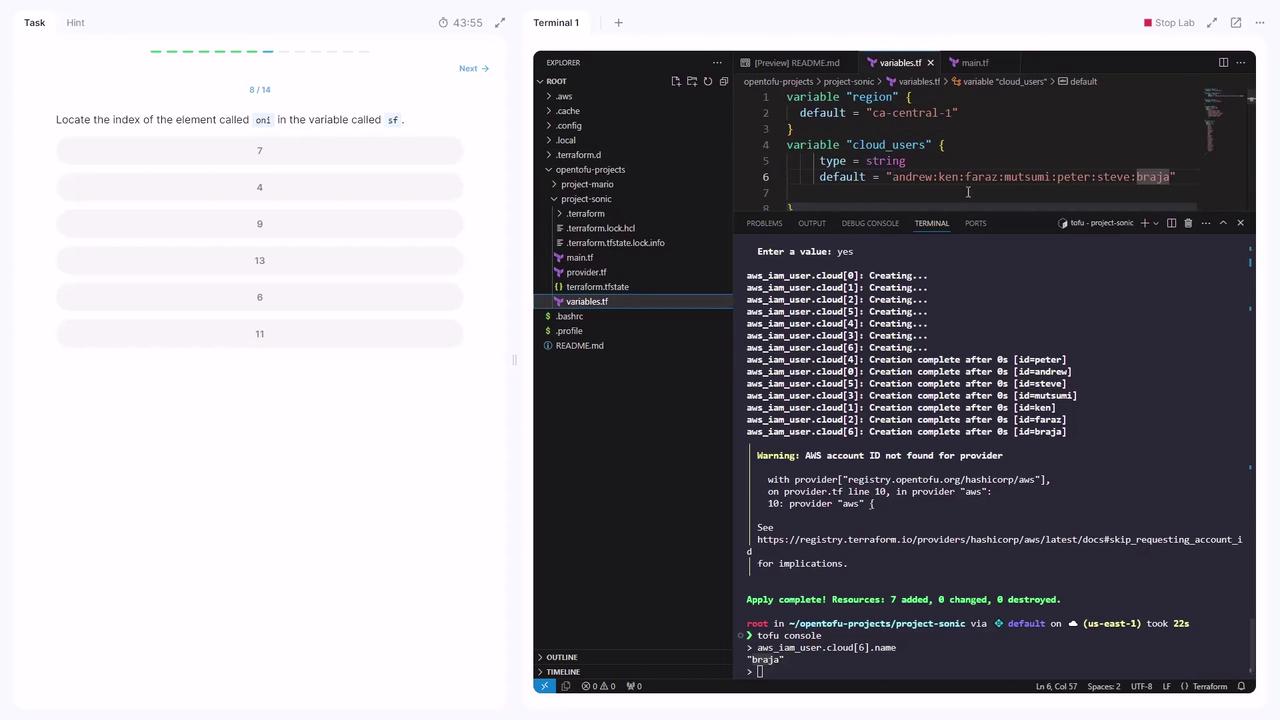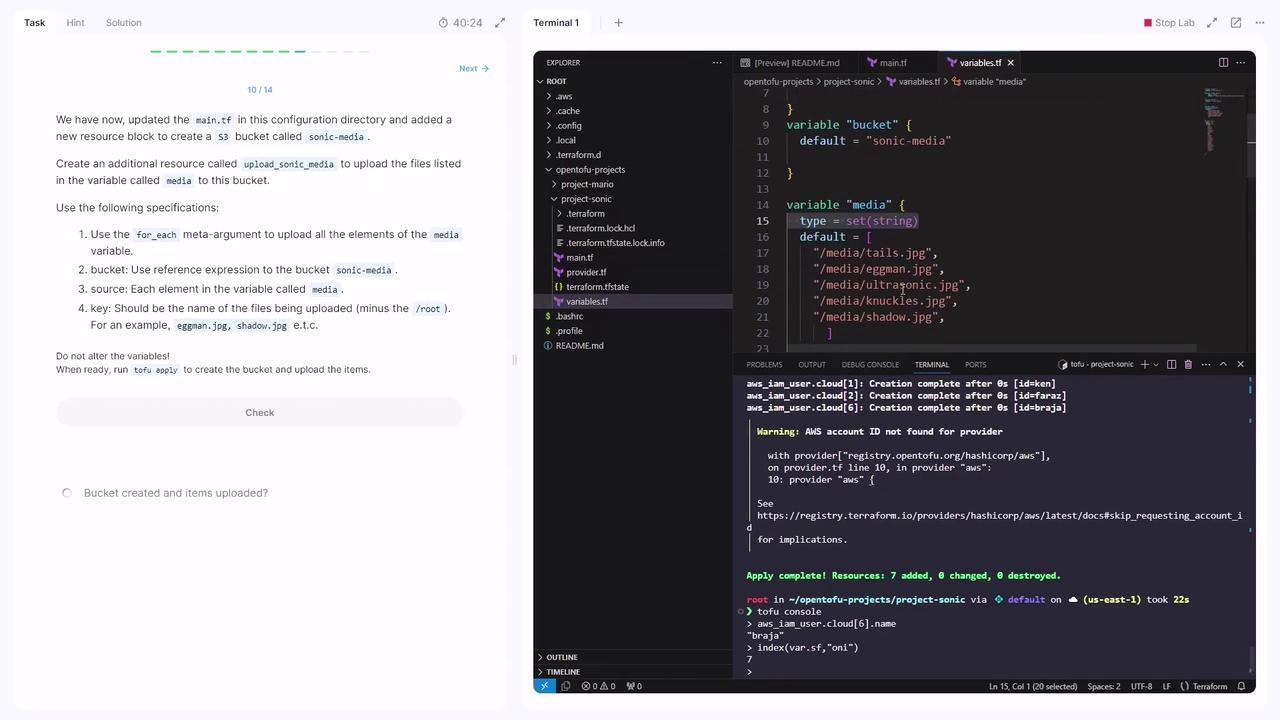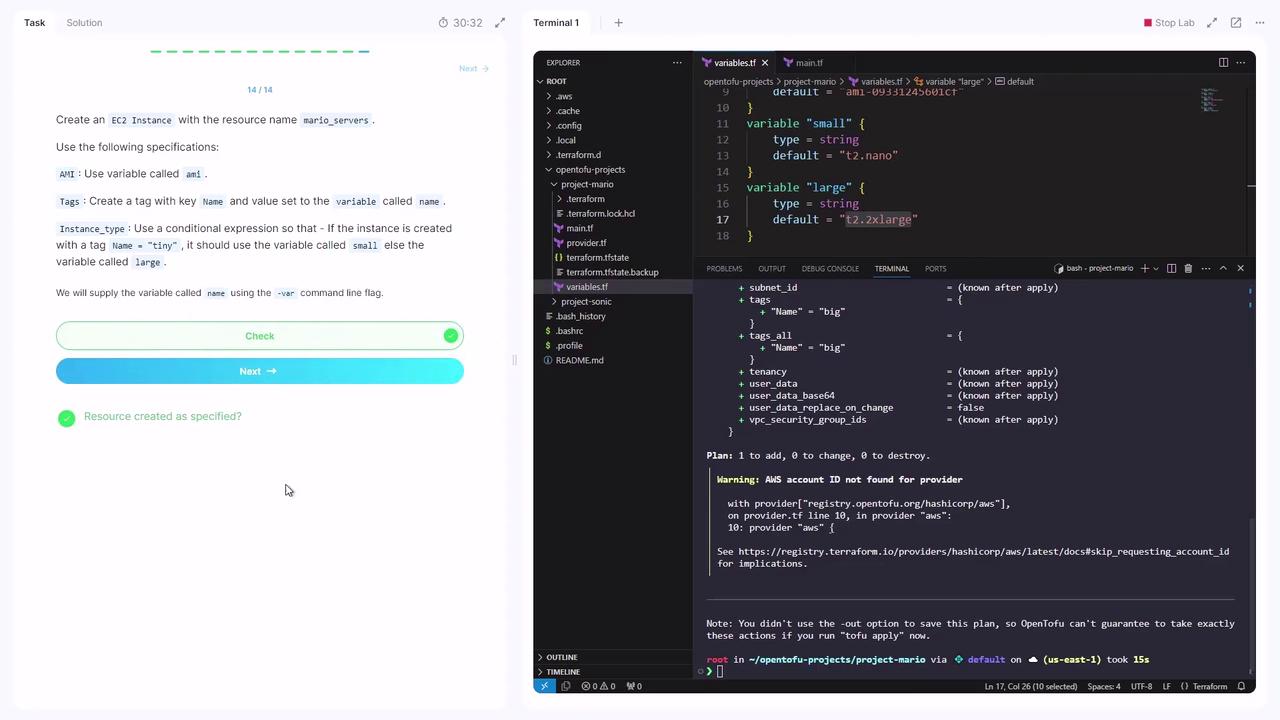OpenTofu: A Beginners Guide to a Terraform Fork Including Migration From Terraform
OpenTofu Functions and Conditional Expressions
Demo Functions and Conditional Expressions
Welcome to this hands-on tutorial where you’ll explore key OpenTofu functions and conditional expressions. We’ll run various examples in the OpenTofu console to see how they transform values and control resource creation in Terraform configurations.
Table of Contents
- Floor Function
- Title Function
- Lookup Function
- Common Functions Overview
- Splitting a Colon-Separated String for IAM Users
- Querying a Resource by Index
- Finding the Index of a List Element
- Uploading Files to S3 with
for_each - Conditional Expressions in an EC2 Resource
- Links and References
1. Floor Function
Use the floor function to round a number down to the nearest integer. What does floor(10.9) return?

Run in the console:
> tofu console
> floor(10.9)
10
Note
The floor function always returns an integer by discarding any fractional part.
2. Title Function
The title function capitalizes the first letter of each word in a string:
> tofu console
> title("user-generated password file")
"User-Generated Password File"
3. Lookup Function
Retrieve a value from a map by key, with a fallback default:
> tofu console
> lookup({ a = "apple", b = "banana" }, "a", "unknown")
"apple"
The first argument must be a map. If the key isn’t found, lookup returns the provided default.
4. Common Functions Overview
| Function | Purpose | Example |
|---|---|---|
| floor | Round down to nearest integer | floor(3.7) → 3 |
| title | Capitalize each word in a string | title("hello world") → "Hello World" |
| lookup | Fetch map value by key or default | lookup(var.map, "key", "default") |
| split | Split string into a list by delimiter | split(":", "a:b:c") → ["a","b","c"] |
| length | Return length of list or string | length(["x","y"]) → 2 |
| index | Find index of an element in a list | index(["x","y"], "y") → 1 |
5. Splitting a Colon-Separated String for IAM Users
In your project directory:
cd ~/OpenTofu-projects/project-sonic
variables.tf contains:
variable "cloud_users" {
type = string
default = "andrew:ken:faraz:mutsumi:peter:steve:braja"
}
Without modifying variables.tf, split cloud_users into a list and create an IAM user for each name. Add this to main.tf:
resource "aws_iam_user" "cloud" {
count = length(split(":", var.cloud_users))
name = split(":", var.cloud_users)[count.index]
}
Initialize and apply:
tofu init
tofu plan
tofu apply
You should see seven IAM users created.
6. Querying a Resource by Index
To inspect a specific IAM user, launch the console:
> tofu console
> aws_iam_user.cloud[6].name
"braja"
7. Finding the Index of a List Element
Given this variable in variables.tf:
variable "sf" {
type = list(string)
default = [
"ryu", "ken", "akuma", "seth", "zangief",
"poison", "thawk", "rashid", "fang", "birdie",
]
}
Locate the index of "rashid":

> tofu console
> index(var.sf, "rashid")
7
8. Uploading Files to S3 with for_each
Your set of media paths is defined in var.media. An S3 bucket is declared in main.tf:
resource "aws_s3_bucket" "sonic_media" {
bucket = var.bucket
}
Add this resource to upload each file:
resource "aws_s3_object" "upload_sonic_media" {
for_each = var.media
bucket = aws_s3_bucket.sonic_media.id
key = substr(each.value, 7, length(each.value) - 7)
source = each.value
}
for_each = var.mediaiterates over each path.keyremoves the leading/media/(offset 7).sourcepoints to the original file.
Apply the changes:
tofu apply
All files will be uploaded to your S3 bucket.

Tip
You can verify uploads by checking the S3 console or using aws s3 ls s3://<bucket-name>/.
9. Conditional Expressions in an EC2 Resource
Switch to the project-mario directory:
cd ~/opentofu-projects/project-mario
variables.tf includes:
variable "name" {
type = string
}
variable "ami" {
type = string
default = "ami-09331245601cf"
}
variable "small" {
type = string
default = "t2.nano"
}
variable "large" {
type = string
default = "t2.2xlarge"
}
Define an EC2 instance that chooses its size based on var.name:
resource "aws_instance" "mario_servers" {
ami = var.ami
instance_type = var.name == "tiny" ? var.small : var.large
tags = {
Name = var.name
}
}
Initialize and plan with -var:
tofu init
tofu plan -var='name="tiny"'
tofu plan -var='name="big"'
# instance_type = t2.2xlarge
This completes our walkthrough of OpenTofu functions and conditional expressions. Great job!

Links and References
- OpenTofu Documentation
- Terraform Language - Expressions
- AWS IAM User Resource
- AWS S3 Bucket & Object
- AWS EC2 Instance
Watch Video
Watch video content
Practice Lab
Practice lab